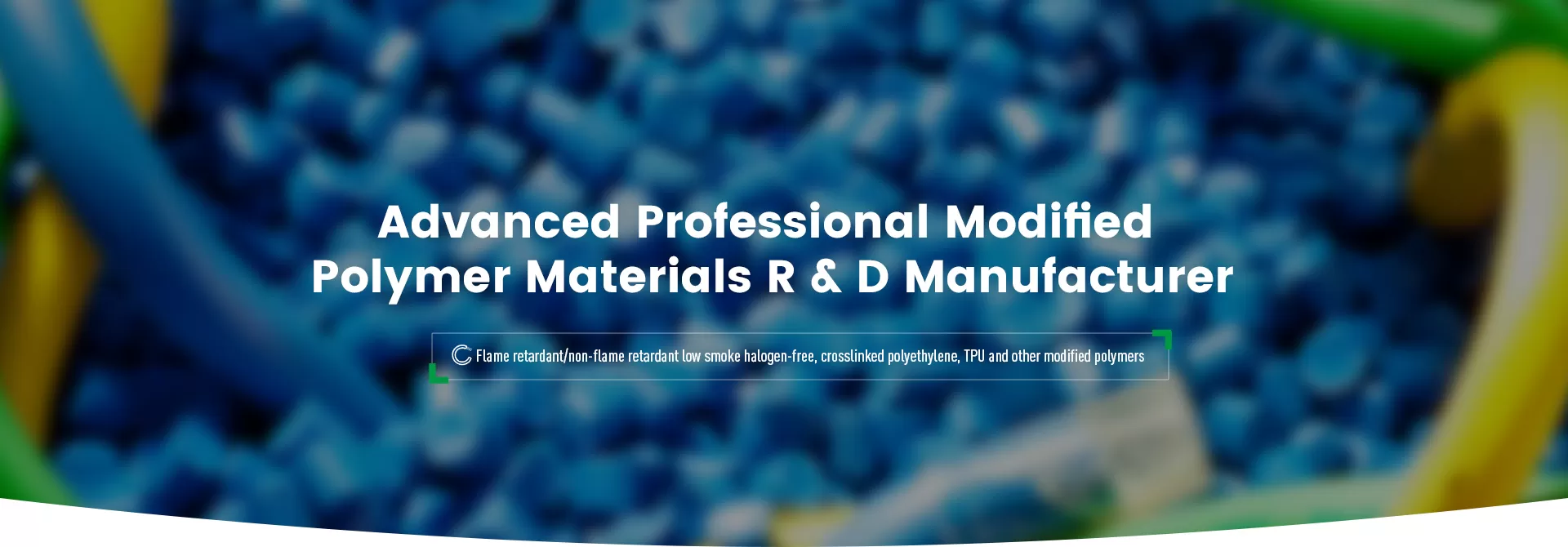

This product is made of high-purity polyolefin resin as the base material, adding high-quality and efficient flame retardants, cross-linking sensitizers, antioxidants and other processing aids, and is made by mixing, plasticizing and granulating. It has excellent mechanical and physical properties, electrical properties, flame retardant properties, and has high heat resistance and other characteristics. There is no precipitation pollution, meets the relevant requirements of ROHS, etc., and is easy to extrude and process.
Application Field
It is suitable for new energy vehicle lines with QC/T1037 and other standards, 25mm2 and below.
The application of XLPO cross-linked polyolefin cable materials in the field of new energy vehicles is to meet the specific requirements of vehicles for wires and cables, which usually include high temperature resistance, high voltage resistance, chemical corrosion resistance, good mechanical properties and flexibility.
Material structure: XLPO is a cross-linked structure formed between polyolefin (such as polyethylene or polypropylene) molecular chains by chemical or physical methods, thereby improving the thermal stability and mechanical properties of the material.
High temperature resistance: XLPO cable materials can withstand high operating temperatures, usually with a heat resistance level of up to 150°C, and are suitable for high temperature environments such as new energy vehicle batteries, motors and control systems.
Electrical insulation performance: XLPO has good electrical insulation performance, which can effectively prevent current leakage and ensure the safe operation of the electrical system.
Chemical corrosion resistance: XLPO has good tolerance to chemicals such as acids, alkalis, and oils, and is suitable for use in various chemical environments.
Mechanical properties: XLPO materials have high tensile strength and tear resistance, and can resist mechanical stress during vehicle operation.
Flexibility: XLPO cable materials have good flexibility while maintaining high strength, which is convenient for wiring in the complex environment inside the vehicle.
Aging resistance: XLPO material has good aging resistance, can maintain stable performance in long-term use, and extend the service life of the cable.
Environmental characteristics: XLPO material does not contain halogens, and produces less toxic gases when burned, which meets the requirements of new energy vehicles for environmentally friendly materials.
Cost-effectiveness: Compared with other high-performance materials, XLPO has better cost-effectiveness while providing the required performance, which helps to reduce the manufacturing cost of the whole vehicle.
Processing technology: XLPO material can be processed into cables through extrusion molding process, which has high production efficiency and is suitable for large-scale production.
| No. | Testing Items | VALUE | Typicalval | UNIT | Method |
| 1 | Density(20℃) | -- | 1.35 | g/cm3 | GB/T 1033 |
| 2 | Tensile strength | ≥10 | 12.5 | MPa | GB/T 1040.2 |
| 3 | Elongation at break | ≥350 | 430 | % | GB/T 1040.2 |
| 4 | Hot extension 200℃,0.2Mpa,15min | ||||
| The elongation rate under load | ≤100 | 50-70 | % | \ | |
| Permanent rate of change after cooling | ≤15 | 2 | % | GB/T 2951.21 | |
| 5 | heat deterioration 175±2℃, 240h | ||||
| Rate of change in the tensile strength | ≤±30 | 25 | % | GB/T 2951.12 | |
| Rate of change of fracture elongation | ≤±30 | -29 | % | GB/T 2951.12 | |
| Winding | Notbroken | Notbroken | \ | ISO6722 | |
| Withstand voltage | Notbroken | Notbroken | \ | ISO6722 | |
| 6 | heat deterioration 150±2℃, 3000h | ||||
| Winding | Notbroken | Notbroken | \ | ISO6722 | |
| Withstand voltage | Notbroken | Notbroken | \ | ISO6722 | |
| 7 | Impact brittlement temperature(-40 ºC) | ≤15/30 | 0/30 | GB/T 5470 | |
| 8 | Volume resistivity(20ºC) | ≥1.0×10^12 | 4.5×10^12 | Ω·m | GB/T 1410 |
| 9 | Dielectric strength(20ºC) | ≥20 | 30 | MV/m | GB/T 1408.1 |
| 10 | Solvent resistance (outer diameter rate of change) | ||||
| Gasoline resistance (ISO1817C, 23°C, 20H)h | |||||
| Rate of change of outer diameter | ≤15 | 12.6 | % | GB/T25087 ISO14572 | |
| Diesel resistance (90%ISO1817 3# oil + 10% paraxylene, 23°C, 20h) | |||||
| Rate of change of outer diameter | ≤15 | 2.3 | % | GB/T25087 ISO14572 | |
| Engine oil resistance (ISO1817 2# oil, 50°C, 20h) | |||||
| Rate of change of outer diameter | ≤15 | 3.1 | % | GB/T25087 ISO14572 | |